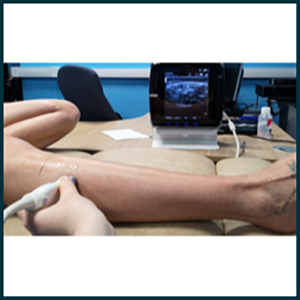Lateral Ankle Sprains: Structural and Functional Approach
Lateral ankle sprains (LAS) are common in sport, accounting for up to 15% of all injuries. Lateral ankle sprains often occur during sporting movements that require rapid decelerations such as landing and turning with sudden and rapid inversion and internal rotation of the ankle. Although individuals who sustain a LAS are likely to return to sport within as little as 7 days, residual issues such as strength and neuromuscular deficits are very common. Indeed, of those who sustain an acute LAS 40 – 70% are at risk of developing chronic ankle instability (CAI) and experience repeated sprains. CAI is likely to develop as a result of either, or both, mechanical and functional deficiencies. Our research portfolio explores ankle sprains from acute to chronic as well as exploring footwear intervention for CAI. We are currently investigating intrinsic risk factors associated with an acute LAS in a prospective study of military recruits. This study will help develop clinical screening tools to identify those at risk of an acute LAS. In collaboration with the Manchester Institute of Health and Performance (mihp.co.uk), we are using ultrasound and motion capture technologies to explore structural and functional differences in those who develop CAI and those who do not develop CAI following an initial ankle sprain. Investigating the relationship between structure and function in those that develop CAI and those that do not will improve understanding of the complex mechanisms associated with CAI and support the development of interventions.
We have been provided with novel customised footwear, support from the New Balance Footwear Research Award, where we are assessing the effect of a flexible ankle collar on function in individuals with chronic ankle instability. It is thought that this novel footwear might offer similar advantages to external supports, such as sensory feedback, but without the common disadvantages.


Team
Dr Chelsea Starbuck
Mr Khalid Alshammari
Prof. Chris Nester